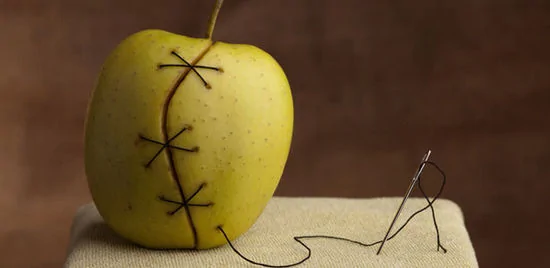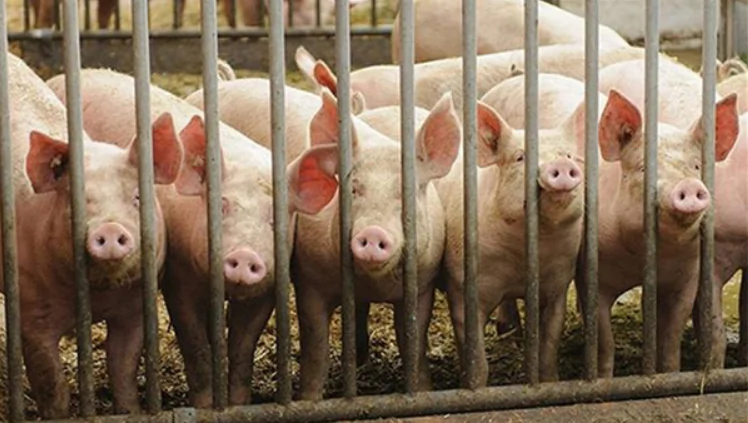美國《大西洋月刊》「轉基因食品有非常真實的危險」譯者注
2012-03-05 15:27:58
美國《大西洋月刊》是1857年11月創辦的精英刊物(見《南方日報》 2001年4月09日 「《大西洋月刊》——美國精神的覺醒 」介紹)。2012年1月12日,該刊刊登了題為《轉基因食品有非常真實的危險(The Very Real Danger of Genetically Modified Foods )》一文;下面是我的譯文、英文原文及幾點感想。
世界上始終存在着一批反對轉基因技術濫用的科學家。多年前他們提出的嚴重警告,今天正一一應驗,而且問題比他們早先預計的還要嚴重得多,千百倍地更糟糕。濫用轉基因技術於農業是錯誤的,美國這家精英刊物終於承認了。此文指出:
(1)中國南京大學報告的最新發現miRNA(微小核糖核酸)功能,可能會(或者已經)顛覆了許多研究領域中的行規;具體說,從分子生物學一開始到現在始終被信奉的理論如中心法則,已經被證明是錯誤的(至少是過度簡單化了);
(2)轉基因生物安全的問題,不僅在於轉進去的那個基因片段「烤」出了一個什麼樣的「比薩餅」(被編碼合成的蛋白質),更是在於發生在「比薩餅」之外的事情,特別是科學家至今知之甚少的miRNA(微小核糖核酸),以及更多尚不明了的東西;
(3)孟山都公司以一己利益為基礎,炮製出來的著名信條「實質上等同」,是徹底的謬誤、是反科學,轉基因是「實質上、根本上不相同」;
(4)改寫教科書關於轉基因生物知識的時刻已經來臨。
僅看現在已經了解的證據,就足夠判斷「轉基因食品有非常真實的危險」。美國的精英,給美國政府深謀遠慮的「21世紀生物技術戰略」橫着打了一悶棍。
此文並沒有明確、具體地說,那些「非常真實的危險」具體表現為什麼,正如南京大學的報告沒有討論,微小核糖核酸(miRNA)的跨界信息交流功能,同轉基因食品安全性有什麼直接的關係。但是,此文作者明明白白地暗示,用「敲除」一個RNA的方法,可以開發殺蟲轉基因植物,「孟山都公司把RNA(核糖核酸)干擾原理用於殺蟲了,而那個能致死昆蟲的生物學機理,在人類身上也是同樣存在的」!
在中國突然出現的廣泛的、高比率的不孕不育現象,難道就不能給人們一點警示?難道是還想看見更「真實」的、更明確的危險?那該是一個什麼樣的「非常真實的危險」?在統計上還必須很顯著吧?
在真正的科學家面前,問題是逃不掉的,即使逃得了一時,也決逃不了一世。但是,就在在「一時」與「一世」的間隔里,美國的「21世紀生物技術戰略」很快就要取得戰略性勝利了!看看最近,2012年以來,杜邦公司多麼高興,中國中央政府的一號文件,簡直就像是為它寫的!一號文件讓杜邦公司感到很舒服!杜邦公司的種子、機器、肥料、農藥,都睜圓了眼睛,瞪着中國肥大的「市場」——你是不是垂涎三丈了?可不要太失態啊!
真正的科學精神,是不斷求真、不斷糾錯。不過,走出實驗室後的偽科學,是堅決隱瞞真相、是從來不肯糾錯的。「非常危險」的轉基因大豆,2012年又以排山倒海之勢,繼續像洪水泥石流一樣往中國「市場」湧來;「轉基因食品無害」的鼓譟,仍然充斥主流媒體,甚至更加甚囂塵上。
悲哀啊,中國的轉基因「國策」——本屆政府正快馬加鞭沖向終點嗎?!
The Very Real Danger of Genetically Modified Foods
《轉基因食品有非常真實的危險》
【英文原文】
By作者:Ari LeVaux
發表時間:Jan 9 2012, 7:57 AM ET457
最新研究表明:我們在食用食物的時候不僅僅是吸收了維生素和蛋白質,而且還攝取了生命信息和微核糖核酸(miRNA)。
New research shows that when we eat we're consuming more than just vitamins and protein. Our bodies are absorbing information, or microRNA.

Image圖像設計 : Dirk Ercken/Shutterstock
感謝Christie Wilcox和Emily Willingham分別發表在「科學美國人」博客網和《生物檔案》上的科學和生物學博文,介紹阿里 勒沃( Ari LeVaux')在最近的《曇花一現》專欄中指出的「科學中的非自洽」。這篇文章已為多家報社和雜誌網站所轉載了。這個專欄是為Alternet做的擴展和更新,勒沃在評論欄中做了進一步潤色。
Update 1/12: Thanks to science and biology bloggers, Christie Wilcox and Emily Willingham at the Scientific American blog network and The Biology Files, respectively, we've learned of the scientific inconsistencies made in Ari LeVaux's most recent Flash in the Pan column, which is syndicated by a number of newspapers and magazine websites. This column has been expanded and updated for AlterNet, with LeVaux discussing specific improvements in the comments.
在食用大米的人體血液和器官中,中國的研究人員已經找到了一種來自大米的微小核糖核酸片段。這個以南京大學為基地的研究團隊稱:這種遺傳物質會粘附在受體的肝臟細胞上,並且左右人體從血液中清除膽固醇。
Chinese researchers have found small pieces of rice ribonucleic acid (RNA) in the blood and organs of humans who eat rice. The Nanjing University-based team showed that this genetic material will bind to receptors in human liver cells and influence the uptake of cholesterol from the blood.
此種核糖核酸因其本身非常小,被稱作微小核糖核酸(縮寫為miRNA)。miRNA是在十年前才被發現的,之後進行了廣泛研究,並且己被確認為是癌症、老年痴呆症和糖尿病等多種人類疾病的誘因。這些miRNA通過壓制或關閉特定基因來發揮作用。中國專家的研究,首次展示了植物中的微小核糖核酸能通過人類消化道而不被降解、首次找到了這些來自植物組織的活性微小生物基因信息物質對人類細胞發號施令的例子。
The type of RNA in question is called microRNA (abbreviated to miRNA) due to its small size. MiRNAs have been studied extensively since their discovery ten years ago, and have been implicated as players in several human diseases including cancer, Alzheimer's, and diabetes. They usually function by turning down or shutting down certain genes. The Chinese research provides the first in vivo example of ingested plant miRNA surviving digestion and influencing human cell function in this way.
如果該研究中的關鍵點能通過嚴格的科學評審------它將會顛覆許多以往的研究結論。因為它意味着,我們吃下去的不只是維生素、蛋白質和能量,可能還包含有基因調控因子。
Should the research survive scientific scrutiny -- a serious hurdle -- it could prove a game changer in many fields. It would mean that we're eating not just vitamins, protein, and fuel, but gene regulators as well.
這個新發現將會加深科學家對許多研究領域的理解,其中包括:跨物種的信息交流方式、協同演化和細胞的吞噬-關聯等問題。它還可能提出代謝紊亂的新模型,甚至解釋某些草藥和現代藥物是如何發揮功能的。
That knowledge could deepen our understanding of many fields, including cross-species communication, co-evolution, and predator-prey relationships. It could illuminate new mechanisms for some metabolic disorders and perhaps explain how some herbal and modern medicines function.
中國專家的這項研究本身未涉及轉基因食品問題,其實它對此有更大的價值。這項研究為我們打開了眼界,展現了一條認識新食品,如轉基因食品, 是如何影響人類健康的新途徑,這是我們完全沒有意料到的事情。
This study had nothing to do with genetically modified (GM) food, but it could have implications on that front. The work shows a pathway by which new food products, such as GM foods, could influence human health in previously unanticipated ways.
在孟山都公司的官方網站上,有這樣的宣告:「測試轉基因食品對人類的安全性是完全沒有必要、也沒有意義的」。這是一個有利於商業的說法,它的依據基礎是1960年前後的遺傳學理論。這種遺傳學理論遵循的是被稱為「中心法則」的遺傳學原則。中心法則假說是這樣的:是DNA(脫氧核糖核酸)在主導細胞;從DNA(脫氧核糖核酸)到細胞之間存在一種單方向運行的指令控制鏈。
Monsanto's website states, "There is no need for, or value in testing the safety of GM foods in humans." This viewpoint, while good for business, is built on an understanding of genetics circa 1960. It follows what's called the "Central Dogma" of genetics, which postulates a one-way chain of command between DNA and the cells DNA governs.
「中心法則」——這事很像我們在比薩餅店訂購一個比薩餅的過程:在這裏,DNA(脫氧核糖核酸Deoxyribonucleic acid的英文縮寫)是指所要的比薩餅類型;下的那個訂單叫RNA(核糖核酸 Ribonucleic acid英文縮寫),訂單指示廚師所定製的比薩餅有什麼特點。隨後烤好交貨的比薩餅,就是DNA(脫氧核糖核酸)所編碼合成的那個「蛋白質」。
The Central Dogma resembles the process of ordering a pizza. The DNA codes for the kind of pizza it wants, and orders it. The RNA is the order slip, which communicates the specifics of that pizza to the cook. The finished and delivered pizza is analogous to the protein that DNA codes for.
幾十年來,科學家們越來越明白,「中心法則」理論只是在大體上正確,它太過簡化了。例如不執行編碼過程的微小核糖核酸miRNA,並不編碼烤制比薩餅的指令、也不幹什麼事,卻能在細胞中移動、並把某些人體的基因表達「沉默」掉。因此,當一段DNA(脫氧核糖核酸)片段在訂製一個比薩餅時,它同時有可能攻擊帶有某個RNA信號的另一家比薩餅店。結果有可能是:別的DNA(脫氧核糖核酸)片段定製的另外的一個比薩餅訂單,最終無法完成比薩餅製作完成。
We've known for decades that the Central Dogma, though basically correct, is overly simplistic. For example: MiRNAs that don't code for anything, pizza or otherwise, travel within cells silencing genes that are being expressed. So while one piece of DNA is ordering a pizza, it could also be bombarding the pizzeria with RNA signals that can cancel the delivery of other pizzas ordered by other bits of DNA.
科學家們可以利用這個發現去合成一個幾乎與miRNA一模一樣的小型人工RNA鏈。通過一種叫作RNA干擾或RNA「敲除」的方法,這些RNA微小片段就能被用來關閉或者「敲除」特定的基因。
Researchers have been using this phenomena to their advantage in the form of small, engineered RNA strands that are virtually identical to miRNA. In a technique called RNA interference, or RNA knockdown, these small bits of RNA are used to turn off, or "knock down," certain genes.
在1994年,RNA敲除方法第一次用於製造商品,開發出來的是一種保鮮期較長的轉基因西紅柿——「莎佛」(Flavor Savr)。從2007年以來,己有多個研究團隊發表報告稱:通過敲除特定RNA,己成功開發具有殺蟲功能的植物RNA。2007年11月5日,發表在麻省理工學院的《科技評論》雜誌上的報告說,中國的研究人員利用RNA敲除法,開發了一種轉基因棉花:
RNA knockdown was first used commercially in 1994 to create the Flavor Savr, a tomato with increased shelf life. In 2007, several research teams began reporting success at engineering plant RNA to kill insect predators, by knocking down certain genes. As reported in MIT's Technology Review on November 5, 2007, researchers in China used RNA knockdown to make:
棉花植株中的一種基因被「沉默」了,這種基因原來的功能,是讓棉鈴蟲產生消化棉花中的天然棉酚毒素的能力。吃了基因「沉默」的轉基因棉花的棉鈴蟲,因為不能產生處理毒素的蛋白質而致死。
...cotton plants that silence a gene that allows cotton bollworms to process the toxin gossypol, which occurs naturally in cotton. Bollworms that eat the genetically engineered cotton can't make their toxin-processing proteins, and they die.
And:
另外
還有孟山都和一家比利時公司(Devgen)的研究人員用基因沉默的辦法開發出一種轉基因玉米,它可以干擾玉米根葉甲蟲消化吸收能量所必須的某種基因,令這種昆蟲在12天內死亡。
Researchers at Monsanto and Devgen, a Belgian company, made corn plants that silence a gene essential for energy production in corn rootworms; ingestion wipes out the worms within 12 days.
人類和昆蟲在基因方面有很多相同之處。假如miRNA的確能夠通過消化道而存活,那麼能夠影響昆蟲基因調控的miRNA,完全有可能,也會如此影響人類的基因。
Humans and insects have a lot in common, genetically. If miRNA can in fact survive the gut then it's entirely possible that miRNA intended to influence insect gene regulation could also affect humans.
孟山都公司聲稱,轉基因食品「沒有必要做人體毒理學測試」,它的根據是「實質性等同」。根據它這個說法,轉基因和非轉基因農作物之間做比較,只需要檢測那個外源DNA(脫氧核糖核酸)本身表達的最終產品(新烤的比薩餅)。孟山都公司認為,那個新插入的DNA(脫氧核糖核酸)不會構成除此以外的任何問題。
Monsanto's claim that human toxicology tests are unwarranted is based on the doctrine of "substantial equivalence." According to substantial equivalence, comparisons between GM and non-GM crops need only investigate the end products of DNA expression. New DNA is not considered a threat in any other way.
孟山都公司網站上是這樣說的:「只要引入的那個蛋白質被認為是安全的,轉基因的農產品就被認為在實質上等同,不會對健康構成任何威脅」。
"So long as the introduced protein is determined to be safe, food from GM crops determined to be substantially equivalent is not expected to pose any health risks," reads Monsanto's website.
孟山都公司的意思就是說,只要轉基因的最終產物——那個比薩餅——沒有毒性,那麼外來的DNA(脫氧核糖核酸)就算是沒有差異,也不會造成任何食品安全問題。在這裏,非常需要指出的一點是,如果把這一法則(實質性等同)用於知識產權法,那麼孟山都公司的許多專利應該是不能成立的。
In other words, as long as the final product -- the pizza, as it were -- is non-toxic, the introduced DNA isn't any different and doesn't pose a problem. For what it's worth, if that principle were applied to intellectual property law, many of Monsanto's patents would probably be null and void.
中國RNA(核糖核酸)研究的領銜研究員是張辰宇。他並沒有評論他的工作會如何影響轉基因食品安全性的爭論。但是,這項發現讓公眾都對孟山都公司的「實質性等同」深感憂慮。而事實上,在很多年前,科學共同體中就提出了這個危害性問題。
Chen-Yu Zhang, the lead researcher on the Chinese RNA study, has made no comment regarding the implications of his work for the debate over the safety of GM food. Nonetheless, these discoveries help give shape to concerns about substantial equivalence that have been raised for years from within the scientific community.
一批科學家1999年就向著名的《自然》雜誌寫過一封信,題為《在實質性等同的背後》。埃里克 米爾斯通等人在這封信中指出:「 實質性等同 是一個 偽科學概念 ,在本質上是反對科學的,因為把它提出來只是為不做生物化學檢驗或毒理學檢驗找了個藉口。」
In 1999, a group of scientists wrote a letter titled "Beyond Substantial Equivalence" to the prestigious journal Nature. In the letter, Erik Millstone et. al. called substantial equivalence "a pseudo-scientific concept" that is "inherently anti-scientific because it was created primarily to provide an excuse for not requiring biochemical or toxicological tests."
對於科學家的指控,孟山都公司是這樣回應的:「在1991年的時候, 實質等同性原則 這一概念在一個由 經濟合作與發展組織(OECD) 所召開的國際科學專家會議上制定了細節。那是早在生物工程產品還沒有上市之前的事情了。」
To these charges, Monsanto responded: "The concept of substantial equivalence was elaborated by international scientific and regulatory experts convened by the Organization for Economic Co-operation and Development (OECD) in 1991, well before any biotechnology products were ready for market."
孟山都公司這個回應,在表面上是反駁一項指責,實際上它是把這件事處理成一項監管性事務了。「實質上等同」顯然需要在孟山都公司的轉基因產品上市之前提出。這是為它的轉基因食品全球化商業所做的一項政策準備。我們都己看見:在世界上任何一個地方,只要接受了「實質等同性」原則,轉基因食品市場銷售的准入合法性便順理成章地辦妥了。當「實質性等同」被世界採納時,孟山都公司已經種出大量轉基因農產品,不失時機地把它們包裝起來推向市場了。
This response is less a rebuttal than a testimonial to Monsanto's prowess at handling regulatory affairs. Of course the term was established before any products were ready for the market. Doing so was a prerequisite to the global commercialization of GM crops. It created a legal framework for selling GM foods anywhere in the world that substantial equivalence was accepted. By the time substantial equivalence was adopted, Monsanto had already developed numerous GM crops and was actively grooming them for market.
擁有34個成員國的經濟合作與發展組織(OECD),主要是發達、富裕、以白人為主的國家,而且是「親」大公司的。這個組織有一個使命,把經濟發展推延到世界上的每一個角落。在這項使命的推進當中,經濟合作與發展組織(OECD)的確為孟山都公司向全球推廣「實質性等同」助了一臂之力。
The OECD's 34 member nations could be described as largely rich, white, developed, and sympathetic to big business. The group's current mission is to spread economic development to the rest of the world. And while the mission has yet to be accomplished, OECD has helped Monsanto spread substantial equivalence globally.
許多轉基因食品的支持者喜歡說:如果必須測試轉基因食品的毒性,那麼對世界上的全部食品都應該做毒性測試。
Many GM fans will point out that if we do toxicity tests on GM foods, we should also have to do toxicity testing on every other kind of food in the world.
可是,現有食物植物的毒性?——測試早就做完了。我們做了幾千年艱難的測試,我們試嘗陌生的植物,導致有人死亡、或者瀕臨死亡。我們就是這樣學會的識別有毒植物。我們每一個人都在以一生的時間不斷地確認,我們究竟會對哪些食物過敏。
But we've already done the testing on the existing plants. We tested them the hard way, by eating strange things and dying, or almost dying, over thousands of years. That's how we've figured out which plants are poisonous. And over the course of each of our lifetimes we've learned which foods we're allergic to.
我們食用的一切非轉基因的或雜交品種的植物,它們的遺傳特性都包容在各自的父母親本中,而它們的基因足夠相似,以使它們能夠通過固有的交配方式、嫁接方式甚至人工受精(試管)方式,繁育和它們自己相似的後代。
All of the non-GM breeds and hybrid species that we eat have been shaped by the genetic variability offered by parents whose genes were similar enough that they could mate, graft, or test tube baby their way to an offspring that resembled them.
給我吃一顆轉入了魚類基因的土豆?且慢。對我來說,那是一種新型植物,需要做測試。今天的科學是多麼的新奇;新植物有沒有有毒、會不會造成過敏,我們可不能用老掉牙的方法去察看它。
A tomato with fish genes? Not so much. That, to me, is a new plant and it should be tested. We shouldn't have to figure out if it's poisonous or allergenic the old fashioned way, especially in light of how new-fangled the science is.
時光流轉,物換星移。承認眼前的事實吧:改寫轉基因知識藍本的時刻已經到來!基因系統的複雜性超過我們的監管系統千百倍,比制定這些規則的公司更複雜千百倍。
It's time to re-write the rules to acknowledge how much more complicated genetic systems are than the legal regulations -- and the corporations that have written them -- give credit.
孟山都公司說「測試轉基因食品對人類健康的安全性,既沒必要也沒有價值」,這無助於提升該公司的公眾形象。應該承認,食品安全性測試很不好做,因為沒有哪一個人願意,去吃一盤轉基因玉米,只是為了證明轉基因食品對人類健康有害,或者無害?真正的問題是:孟山都公司把RNA(核糖核酸)干擾原理用於殺蟲了,而那個能致死昆蟲的生物學機理,在人類身上也是同樣存在的。這樣的話,在實驗室先做個安全測試,就是十分必要的了。
Monsanto isn't doing itself any PR favors by claiming "no need for, or value in testing the safety of GM foods in humans." Admittedly, such testing can be difficult to construct -- who really wants to volunteer to eat a bunch of GM corn just to see what happens? At the same time, if companies like Monsanto want to use processes like RNA interference to make plants that can kill insects via genetic pathways that might resemble our own, some kind of testing has to happen.
應該從這裏開始:測試異源DNA被插入後導致的其他後果,如miRNA,而不是僅限於那塊預期的「比薩餅」。但是在孟山都公司網站上,我們看到的卻是:
A good place to start would be the testing of introduced DNA for other effects -- miRNA-mediated or otherwise -- beyond the specific proteins they code for. But the status quo, according to Monsanto's website, is:
「對轉基因農作物中的外源DNA不必做安全性測試。因為所有的食物中都有DNA(以及相應的RNA)。DNA自身是無毒的、在植物中也無毒,不會構成威脅。」
There is no need to test the safety of DNA introduced into GM crops. DNA (and resulting RNA) is present in almost all foods. DNA is non-toxic and the presence of DNA, in and of itself, presents no hazard.
在我們已知的事實目前,孟山都公司太傲慢了。時間將會證明,它這個行為太過輕率。
Given what we know, that stance is arrogant. Time will tell if it's reckless.
有很多可用的測試方法,可以分析RNAs是否會不小心「敲掉」人類的某些基因。我們真心希望孟山都公司會做這樣的檢測。不過,既然孟山都公司連貼轉基因食品的標籤都不干,顯然它想要的就是讓你閉上眼睛、張開嘴巴,乖乖地咽下它的轉基因「安全」食品。
There are computational methods of investigating whether unintended RNAs are likely to be knocking down any human genes. But thanks to this position, the best we can do is hope they're using them. Given it's opposition to the labeling of GM foods as well, it seems clear that Monsanto wants you to close your eyes, open your mouth, and swallow.
此時此刻,孟山都公司應該做的事情,是如實公告,它對轉基因食品安全性所知很少。DNA編碼不僅可以合成蛋白質,更有相當多未知功能。RNA的功能很復性,不是當年發現DNA/RNA結構的沃森和克拉克兩位科學家所能想像的。
It's time for Monsanto to acknowledge that there's more to DNA than the proteins it codes for -- even if it's for no other reason than the fact that RNA alone is a lot more complicated that Watson and Crick could ever have imagined. .
The current version of this article originally appeared on AlterNet.
顧秀林 專家專欄



















